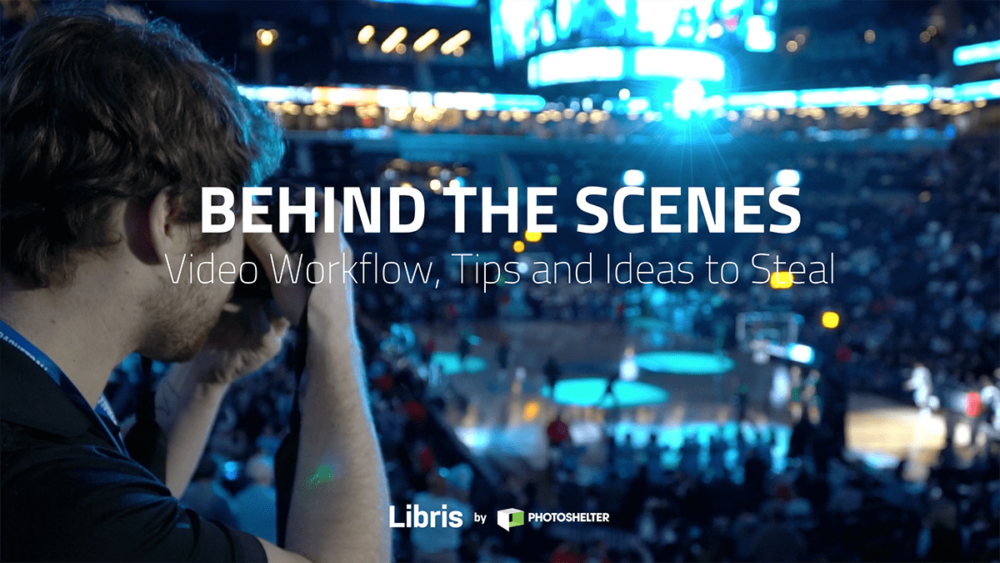At the beginning of 2018, we asked ourselves, how can we create thumb-stopping, binge-worthy content our audience can’t get anywhere else?
The result was our Behind the Scenes with the Storytellers video series, where we share stories of the creative people behind brands like Professional Bull Riders, the Chicago Blackhawks, the Vegas Golden Knights and the Women’s March Chicago.
Now, in a new on-demand webinar with Libris Content Marketing Manager and one-man-band video producer Kristin Twiford, we’re pulling back the curtain on our own video content marketing to give you simple tips and easy hacks for improving your team’s video workflow.
Why? Because new research shows 72% of marketers say their need for video is increasing, but 81% say it’s the hardest type of content to produce. We want to share our secrets with you to make your video production process easier – and we can’t wait to see the videos you make!
Watch the video to get:
- Tips for how to find great story ideas
- A list of gear and tools your team can use to boost the quality of your videos
- Tricks for improving your shooting, editing and overall storytelling
- Ideas to help you get more ROI from every video story
Video Content Marketing Workflow: All Your Questions Answered
Scroll through the Q&A with Kristin below to get the answers to our questions from the audience, and be sure to tweet any more questions @getlibris!
And, be sure to check out more of our Libris Visual Storytelling Webinars.
What are your recommendations or hacks for dealing with the challenges of shooting indoors? Any suggestions for lights?
Try to control the light as much as you can. If I’m setting up an interview, I use two LED panelsor or a single ring light. Sometimes I may use a number of ring lights, but that depends on the situation itself.
When I’m shooting B roll, I try to rely on the light in the room, but that can be challenging. I keep a small light I can mount on my camera in my camera bag for desperate situations (but I prefer not to use it because it looks less natural).
What are some tricks for improving sound when you didn’t get the best quality sound?
This is a great question, and a bit of a heart-breaking one, since it’s happened to me many times over the years and it’s really hard to improve bad audio.
If your audio is too quiet, you can boost it in your video editing software or try to fix it in an audio editing program like Adobe Audition or this Split Screen Video Editor. Split Screen Video Editors allow you to work on audio while simultaneously following the video to ensure that the video and audio are seamlessly synced. These programs also offer effects to reduce humming or hissing sounds.
The bottom line is this: you have to decide whether the audio still adds to the story, even if it’s lower quality, or if it takes away from the story. If it’s distracting and no longer adds value, think of a creative way to tell the story without it (like text on screen) or try to re-shoot the segment.
Can you elaborate on when you would post one version of video on YouTube, one on Facebook, one on Twitter and another on Instagram?
When you’re tailoring your video to different platforms, you have to think about what your goals are for that video. For example, if you want to drive awareness, YouTube (or Youtube alternatives), and Facebook are great channels for sharing your main hero video because they make your content shareable and discoverable. If you’d rather catch people’s attention on social media so you can drive them to your website, you may want to share a teaser/trailer version on Twitter, then link to the hero video on your website.
Any suggestions if your interviewee just isn’t comfortable talking, even with the open-ended questions?
You have to meet them where they are. Ask the same question a few different ways and keep giving them a chance to answer.
Sometimes, someone’s not going to give you anything more than a one-word answer, so you have to get creative when you’re editing. Maybe it’s pairing that one-word answer with text on screen. Maybe it’s cutting that person’s answer right next to someone else’s answer to the same question.
I’d also say, sometimes talking about myself helps people open up. Sometimes you’re not going to be able to answer the same question, but I work a lot with kids and I’ll say, “my favorite color is blue, what’s your favorite color?” Make it feel like a conversation.
And, keep in mind that it’s important to make the person feel comfortable long before they sit down for that interview. Talking to them just like a normal person as you’re setting up is going to make it a lot easier during your interview. But remember – don’t talk to them about your story – talk to them about something off-topic. Save your soundbites for when the camera is rolling!
Any tips for apps for closed captioning?
We’ve tested a few different things. We’ve used Rev.com to get captions for files where we don’t already have a written transcript.
But when we have a written log or a script, we upload that to YouTube and it automatically captions the videos. You can download the SRT file (the file with the captions) and upload it into your other video publishing platforms, as well. It’s always best to double-check these files, but it’s a really easy – and free – trick.
What’s your opinion on vertical video?
A lot of brands are producing at least some vertical video, and I think it’s absolutely worth testing. A lot of people aren’t going to turn their phones to watch your video. Test it out. Run six similar videos, three horizontal and three vertical. If you find that the vertical videos are performing best with your audience, you should produce more of that content – and it may depend on how many of your audience members are engaging with your brand on mobile vs. desktop.
Keep in mind, if you want to repurpose the footage later, it’s probably better to shoot it horizontally and crop it as a vertical video (just make sure you’re aware of that as you’re shooting so you’re keeping the main action in the middle of your screen).
Regarding video workflow, we have found that shot logging and media management are key to efficiently producing video. What are your thoughts on applications like Live Logger for Adobe Prelude, Lumberjack, etc. as well as more DIT specific apps for dumping footage like SilverStack, ShotPut Pro, etc.?
I haven’t experimented with tools like Live Logger or Lumberjack, but I’m all for any tool that helps you edit as you’re shooting, especially if you’re working on a video that needs to be turned around quickly. Plus, I love the idea of being able to add metadata to clips as I’m shooting.
As for dumping footage, I immediately dump my clips to a hard drive after a shoot. That hard drive is backed up automatically to another hard drive. When I need to share clips with another team member, I upload them to our digital asset management platform, Libris.
What are some tips for forecasting or predicting what shots you will need that might be less than obvious?
First of all, that initial call is so important for thinking through the story before you get there. Use that to get your ideas flowing.
Second, when I’m shooting, I’m always on. Sometimes you need to lift your head up above the camera and think, “What am I missing?” Remember that you’re going to need shots that establish where you are. Think about how you can step outside of the box and not just focus on your main character, but look around and see what they’re seeing. What other details of the environment can you capture?
And, make sure you’re getting different angles. If you’re shooting in a stadium, how can you get to a different position that no one else is going to have? It’s easy to get wrapped up in the action, so take a step back and find a totally different angle (like up in the rafters or behind the curtain – somewhere no one else can see).





